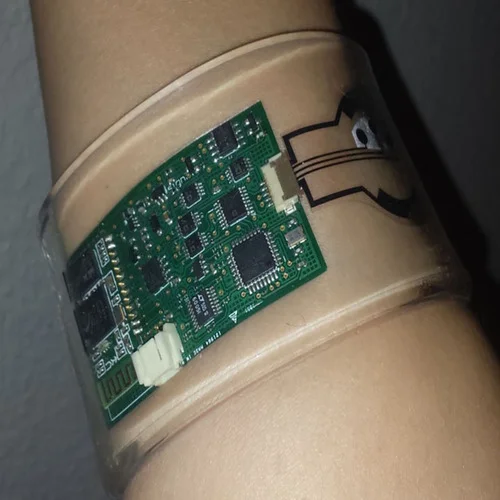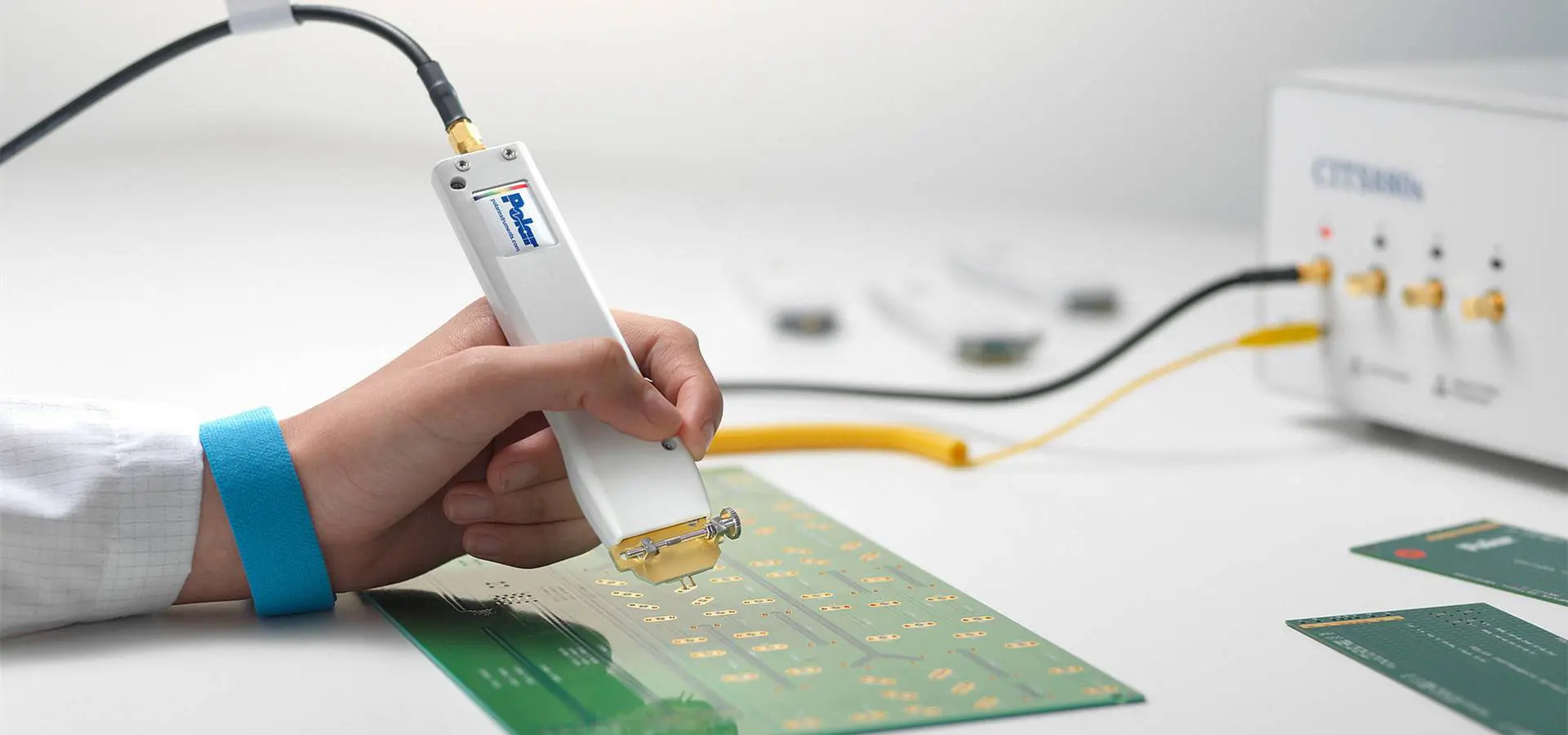Wearable health devices are transforming the way we monitor and manage personal wellness, from fitness trackers to medical-grade sensors. But behind every successful wearable lies a critical component: the printed circuit board (PCB). Choosing the right PCB substrate materials for wearables is essential for ensuring performance, flexibility, and biocompatibility. In this blog, we’ll explore the best substrate options for wearable health PCBs, focusing on biocompatible materials, flexible substrates, and key considerations like Rogers material, as well as comparisons such as FR4 vs polyimide for wearable applications. Whether you're designing a smartwatch or a medical monitoring device, this guide will help you make informed decisions for optimal results.
Let’s dive into the world of PCB substrate materials for wearable health devices, breaking down the options and their unique benefits for performance and safety.
Why Substrate Material Matters for Wearable Health PCBs
The substrate is the foundation of any PCB, providing the structural base for circuits and components. For wearable health devices, the substrate must meet specific demands: it needs to be lightweight, flexible, durable, and safe for prolonged contact with the human body. Poor material selection can lead to device failure, discomfort, or even health risks due to toxic reactions. That’s why understanding PCB substrate materials for wearables is crucial for engineers and designers.
In wearable health applications, substrates must balance electrical performance with physical and biological compatibility. For example, a fitness tracker may need to bend around the wrist, while a glucose monitor must avoid skin irritation. With these needs in mind, let’s explore the key factors to consider when selecting a substrate.

Key Factors in Choosing PCB Substrate Materials for Wearables
When selecting a substrate for wearable health PCBs, several factors come into play. Here’s a detailed look at the most important considerations:
1. Flexibility for Comfort and Fit
Wearable devices often conform to the body’s shape, requiring flexible PCB substrate options. Rigid materials can cause discomfort or limit device design, so substrates that can bend without breaking are ideal. Flexibility also impacts durability—repeated bending shouldn’t lead to cracks or signal loss.
2. Biocompatibility for Safety
Biocompatible PCB materials for health applications are non-toxic and safe for skin contact or implantation. Materials must resist causing allergic reactions or releasing harmful chemicals over time. This is especially critical for medical wearables like heart rate monitors or insulin pumps.
3. Electrical Performance for Reliability
The substrate must support high-frequency signals and low signal loss, especially for devices transmitting real-time health data. Dielectric constant (Dk) and dissipation factor (Df) are key metrics. For instance, a low Dk (around 2.5-3.5) ensures minimal signal delay, while a low Df (below 0.005) reduces energy loss—vital for battery-powered wearables.
4. Thermal and Mechanical Stability
Wearables face varying temperatures and physical stress. The substrate should withstand heat from components (up to 85°C in some cases) and resist deformation. Thermal stability ensures consistent performance, while mechanical strength prevents damage during daily wear.
5. Lightweight Design for User Comfort
Heavy materials can make wearables bulky and uncomfortable. Thin, lightweight substrates reduce the device’s weight, enhancing user experience without sacrificing functionality.
With these factors in mind, let’s explore the most common and effective substrate materials for wearable health PCBs.
Popular PCB Substrate Materials for Wearable Health Devices
Choosing the right material involves weighing trade-offs between flexibility, biocompatibility, and performance. Below are the top substrate options for wearable health applications.
1. Polyimide: The Go-To for Flexible PCBs
Polyimide is a leading choice among flexible PCB substrate options due to its excellent flexibility and thermal stability. It can withstand temperatures up to 260°C, making it ideal for wearables with high-performance components. Polyimide also offers a low dielectric constant (around 3.5), ensuring reliable signal transmission for health data.
In terms of biocompatibility, polyimide is often coated or treated to meet medical standards, making it suitable for skin-contact devices. Its thin profile (as low as 0.05 mm) supports lightweight designs, perfect for smart bands or patches.
Pros: High flexibility, good thermal resistance, lightweight.
Cons: Higher cost compared to rigid materials, limited rigidity for complex circuits.
2. Rogers Material: High-Performance for Wearable PCBs
Rogers material for PCB wearables is synonymous with high-frequency performance. Known for its low dielectric loss (Df as low as 0.0013) and stable Dk (ranging from 2.2 to 10.2 depending on the specific grade), Rogers substrates excel in applications requiring precise signal integrity, such as wireless health monitors.
While not inherently flexible like polyimide, certain Rogers laminates can be used in hybrid or flex-rigid designs. Biocompatibility depends on the specific formulation, so additional coatings may be needed for direct skin contact. Rogers materials are often chosen for their reliability in demanding environments, though they come at a premium cost.
Pros: Superior electrical performance, low signal loss, stable in varying conditions.
Cons: Expensive, less flexible than polyimide.
3. FR4: A Traditional Option with Limitations
FR4, a fiberglass-epoxy laminate, is a common substrate for rigid PCBs due to its affordability and decent electrical properties (Dk around 4.5). However, in the debate of FR4 vs polyimide for wearable applications, FR4 falls short because of its rigidity. It’s unsuitable for devices requiring bending or contouring to the body.
For wearables, FR4 might be used in hybrid designs where a rigid section houses complex circuitry, paired with a flexible material for other areas. Its biocompatibility is limited, often requiring protective layers to prevent skin irritation. FR4 is best for non-flexible, cost-sensitive projects rather than cutting-edge wearables.
Pros: Low cost, widely available, good for rigid sections.
Cons: Not flexible, heavier, limited biocompatibility.
4. Liquid Crystal Polymer (LCP): Emerging for Wearables
Liquid Crystal Polymer (LCP) is gaining traction for wearable health PCBs due to its flexibility and excellent electrical properties. With a Dk of about 2.9 and a very low Df (around 0.002), LCP supports high-frequency signals with minimal loss. It’s also moisture-resistant, which is crucial for wearables exposed to sweat or humidity.
LCP offers moderate biocompatibility and can be engineered for medical use. Its flexibility isn’t as pronounced as polyimide, but it’s a strong contender for compact, high-performance devices like hearing aids or implantable sensors.
Pros: Low signal loss, moisture resistance, flexible enough for wearables.
Cons: Higher cost, less common than polyimide.
FR4 vs Polyimide for Wearable Health Devices: A Direct Comparison
When comparing FR4 vs polyimide for wearable applications, the choice often boils down to flexibility and cost. Here’s a detailed breakdown:
- Flexibility: Polyimide wins hands-down. It can bend repeatedly without damage, while FR4 is rigid and prone to cracking under stress.
- Electrical Performance: FR4 has a higher Dk (4.5) compared to polyimide (3.5), meaning slower signal speeds and more potential loss—less ideal for real-time health data.
- Cost: FR4 is significantly cheaper, often costing 30-50% less per square inch than polyimide, making it tempting for budget-conscious projects.
- Biocompatibility: Polyimide can be made biocompatible with coatings, while FR4 often requires additional barriers to prevent skin reactions.
- Use Case: Use polyimide for flexible, body-conforming wearables. Reserve FR4 for stationary or hybrid designs where rigidity isn’t a drawback.
For most wearable health devices, polyimide is the better choice due to its adaptability and performance. FR4 might play a supporting role in less dynamic areas of a design.
Biocompatible PCB Materials for Health Applications
Biocompatibility is non-negotiable for wearable health devices, especially those in direct contact with skin or implanted in the body. Biocompatible PCB materials for health must meet strict standards like ISO 10993, which tests for cytotoxicity, sensitization, and irritation.
Here are key considerations for biocompatibility:
- Material Composition: Avoid substrates with harmful additives like lead or certain flame retardants. Polyimide and certain grades of LCP can be formulated to be biocompatible.
- Surface Treatments: Coatings like parylene or silicone can enhance biocompatibility, creating a barrier between the substrate and the body.
- Testing and Certification: Ensure materials pass regulatory checks. For example, medical-grade wearables in the U.S. must comply with FDA guidelines, often requiring extensive material documentation.
Research into sustainable and eco-friendly biomaterials is also emerging, with some substrates being developed to be both biocompatible and biodegradable for temporary implants. While not yet mainstream, this trend highlights the future of biocompatible PCB materials for health.

Challenges in Material Selection for Wearable Health PCBs
Selecting the perfect substrate isn’t without hurdles. Here are common challenges engineers face:
- Cost vs. Performance: High-performance materials like Rogers or LCP can double or triple production costs compared to basic options like FR4.
- Manufacturing Complexity: Flexible materials like polyimide require specialized fabrication processes, potentially increasing lead times by 20-30%.
- Regulatory Compliance: Meeting biocompatibility standards adds layers of testing and certification, sometimes delaying product launches by months.
- Balancing Flexibility and Durability: Ultra-flexible materials may wear out faster under constant bending, with some substrates losing integrity after 10,000 flex cycles.
Navigating these challenges requires close collaboration between designers, material suppliers, and manufacturers to align on project goals and constraints.
Future Trends in PCB Substrate Materials for Wearables
The wearable health industry is evolving rapidly, and so are the materials used in PCB design. Here are a few trends to watch:
- Stretchable Substrates: Beyond flexibility, stretchable materials (like silicone-based substrates) are being developed to mimic skin elasticity, ideal for advanced e-skin applications.
- Bio-Resorbable Materials: For temporary medical implants, substrates that dissolve safely in the body after use are under research, reducing the need for surgical removal.
- Integration with Sensors: Substrates are being engineered to embed sensors directly, reducing device size and improving data accuracy by up to 15% in some prototypes.
These innovations promise to push the boundaries of what wearable health devices can achieve, making material selection an ever-evolving field.
How to Choose the Right Substrate for Your Wearable Health PCB
Selecting the ideal PCB substrate for a wearable health device depends on your specific application. Follow these steps to make an informed decision:
- Define Device Requirements: Determine if flexibility, signal speed, or biocompatibility is the top priority. For instance, a fitness tracker prioritizes flexibility, while a wireless heart monitor needs low signal loss.
- Evaluate Material Properties: Match Dk, Df, and thermal resistance to your circuit needs. A high-frequency device might need a Dk below 3.0, pointing to Rogers or LCP.
- Assess Biocompatibility Needs: For skin-contact devices, ensure materials meet medical standards or can be coated for safety.
- Consider Cost Constraints: Balance performance with budget. If cost is a concern, consider hybrid designs combining affordable FR4 with flexible polyimide.
- Prototype and Test: Build prototypes with shortlisted materials and test for performance, comfort, and durability under real-world conditions.
By systematically evaluating these factors, you can pinpoint the substrate that best fits your wearable health project.
Conclusion: Building Better Wearables with the Right Substrate
The success of wearable health devices hinges on choosing the right PCB substrate materials. From flexible options like polyimide to high-performance choices like Rogers material for PCB wearables, each substrate offers unique strengths tailored to specific needs. Whether you’re debating FR4 vs polyimide for wearable designs or prioritizing biocompatible PCB materials for health safety, understanding material properties is the first step to creating reliable, user-friendly devices.
At ALLPCB, we’re committed to supporting engineers in navigating these choices with expert guidance and high-quality manufacturing solutions. By focusing on performance, flexibility, and biocompatibility, you can design wearables that not only meet technical standards but also improve lives through better health monitoring and care.

 ALLPCB
ALLPCB







